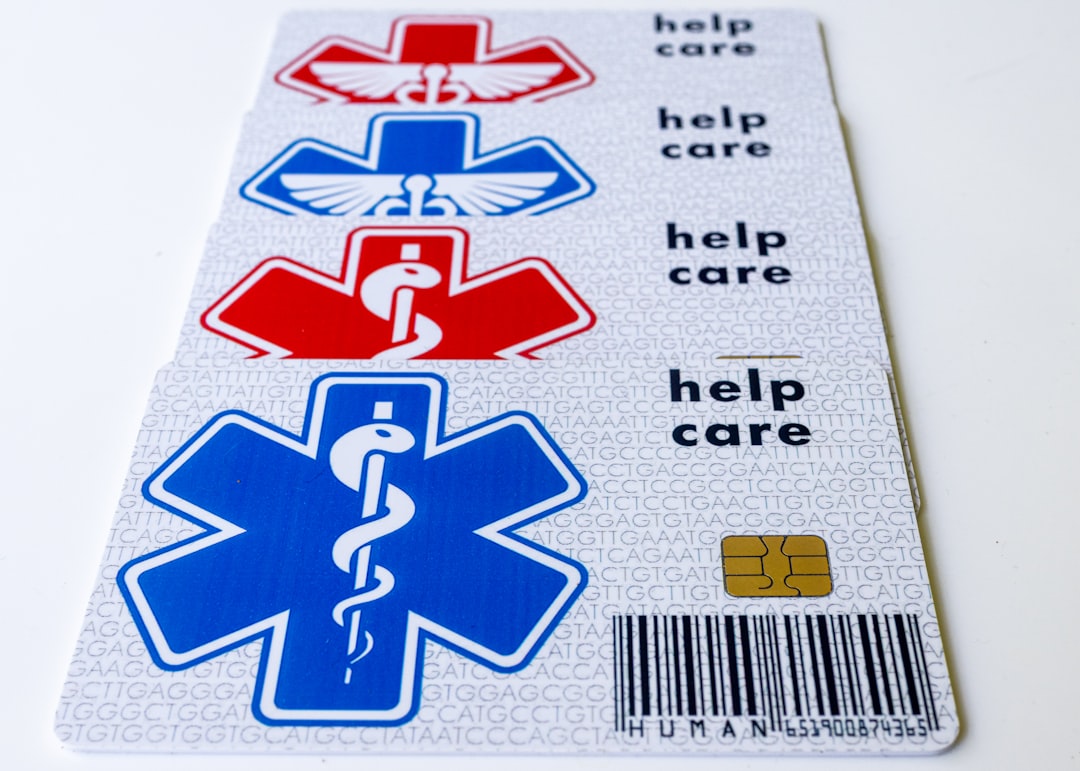

Engage prospects with a scan and streamline customer engagement with FREE QR code marketing tools by Sona – no strings attached!
Create a Free QR CodeFree consultation

No commitment

Engage prospects with a scan and streamline customer engagement with FREE QR code marketing tools by Sona – no strings attached!
Create a Free QR CodeFree consultation

No commitment
The healthcare staffing industry faces growing pressure to deliver high-quality talent quickly, comply with evolving regulations, and meet the changing needs of both clinicians and healthcare providers. Staffing leaders must navigate fragmented touchpoints and escalating candidate churn as clients demand prompt, responsive service in a tight labor market. Timely, actionable feedback from placed healthcare professionals and client institutions is crucial, yet many agencies struggle to capture it, missing key signals as stakeholders go untracked and satisfaction data gets lost.
Traditional feedback mechanisms such as post-placement calls, paper surveys, and sporadic emails often fail to capture valuable insights from all prospects and candidates. Manual or delayed cycles mean urgent issues go unresolved, making it difficult to ensure consistent placement quality or respond before leads grow cold. Missed feedback opportunities can put compliance, relationships, and agency reputation at risk in a fast-moving environment.
Modern tools like QR codes are now emerging as effective ways to seamlessly capture feedback at critical moments. By transforming documents, signage, and onboarding materials into entry points for digital engagement, healthcare staffing agencies can track interactions, close information gaps, and create a holistic view of both candidate and client experience. QR integrations enable agencies to quickly identify pain points, optimize placements, and respond to the market with greater agility.

Healthcare staffing agencies frequently encounter challenges in tracking feedback from every stakeholder, especially those outside digital systems or working mostly offline. Busy clinicians have little time for phone calls, managers move from unit to unit, and paper handoffs rarely lead to structured responses. Inconsistent outreach and paper-based tools lead to missed insights, limiting opportunities for improvement and making it difficult to validate service quality or catch compliance risks early.
QR codes connect offline and online touchpoints for scalable, digital feedback collection. When placed on assignment packets, timecards, ID badges, and facility signage, they create a fast path to mobile forms like Google Forms QR codes and support tickets that can be routed by role, facility, and placement stage. Every scan is recorded, enabling teams to attribute responses and visualize engagement patterns across the entire journey. To overcome traditional barriers and drive actionable feedback:
Adopting modern QR tools simplifies survey routing and reporting, reduces administrative effort, and helps agencies close the loop with stakeholders faster. With proper design and integration, QR scans can trigger automated workflows such as acknowledgments, escalation for low scores, and recruiter follow-ups, ensuring issues never slip through the cracks.

Visibility into the candidate and client journey is a persistent challenge in healthcare staffing. Feedback forms are often ignored, and anonymous responses cannot be tied back to placements, creating a blind spot that limits operational improvement. Clinicians working long shifts are less likely to respond to phone calls or long emails, while managers have little time to provide structured input unless it is quick and convenient. QR codes address these challenges by bridging physical processes with digital tools.
They create a seamless path from physical materials to mobile feedback forms, reaching time-strapped clinicians and managers who otherwise go unheard. For example, a QR code on a shift checkout sheet can link to a two-minute survey, capturing actionable sentiment when the experience is fresh. Combined with smart routing and role-based forms, agencies can align questions to the exact stage and persona, improving response quality and completion rates.
In practice, embedding QR codes on timecards, scheduler emails, and orientation packets captures feedback instantly and closes communication loops quickly. The result is better service delivery, stronger client relationships, and a proactive posture that protects both revenue and reputation.

Agencies encounter multiple opportunities for feedback collection across the staffing lifecycle. Choosing the right QR format will determine both the user experience and the quality of data captured. Formats should align with the action you want a clinician, facility manager, or recruiter to take in the moment, and dynamic options should be used whenever routing or attribution is needed.
Web link QR codes are the workhorses for most healthcare staffing scenarios because they connect scanners to mobile-first forms, landing pages, or knowledge bases. Dynamic QR codes are essential when content will change over time or when analytics, retargeting, and security matter. By mixing formats, agencies can support both quick contact needs and structured data collection.
For most feedback workflows, web link and dynamic QR codes are the best choices because they convert every scan into actionable, attributable data. Combining these with SMS or email launchers provides a safety valve for urgent, time-sensitive issues that demand human intervention.

Many agencies miss high-value feedback and improvement touchpoints because they treat surveys as special events rather than embedded parts of daily workflows. The most effective QR strategies meet stakeholders where they already are and turn routine processes into data-rich interactions. By mapping moments that matter in the staffing journey, you can prioritize placements of QR codes that uncover operational bottlenecks and experience gaps, and explore staffing QR solutions for more placement ideas.
Think through the life cycle: candidate sourcing, credentialing, onboarding, first shift, weekly timecard submission, client check-ins, and assignment completion. Each moment offers a natural invitation to capture sentiment, resolve issues, and reinforce loyalty. By placing QR codes at those moments, you turn one-way documents into two-way conversations.
Meeting stakeholders in their own environment reduces friction and increases response rates. With the right tagging, you will quickly see patterns by facility, shift, and specialty, helping your team act decisively and improve outcomes for both clients and clinicians.

Fragmented feedback often leads to slow response times, inconsistent service quality, and missed opportunities for retention. Embedding QR codes at the right points turns everyday actions into structured, measurable input. These use cases are simple to deploy and immediately valuable.
Beyond these, agencies can extend QR usage to incident reporting, recruiter NPS, housing support for travel assignments, and quick-reference SOPs for new units. Each scan deepens your operational awareness and helps you tailor support where it matters most.
Healthcare staffing agencies often struggle to connect in-person interactions and paper workflows to CRM records, which results in generic follow-up that misses the mark. When QR codes are tied to specific events and materials, every scan becomes an intent signal that can populate high-value segments. This approach enables personalized outreach that respects the scanner’s context and reduces irrelevant messaging.
By deploying distinct QR codes across the candidate and client journey, you can automatically segment audiences and trigger meaningful sequences. For example, a scan from a credentialing packet indicates onboarding progress, while a scan from a break-room poster about shift satisfaction suggests a need for facility support or recruiter follow-up.
With Sona QR, each code becomes a smart entry point to your funnel. Scans and form submissions sync to systems like Salesforce or HubSpot, allowing you to retarget based on real behavior rather than assumptions and to nurture relationships with precision.
Fragmented data makes it difficult to understand which touchpoints create the most engagement or satisfaction. QR codes unify offline and digital interactions, creating a measurable backbone across print, in-person, and online channels. When every asset carries a scannable call to action, you can attribute outcomes, compare placements, and invest in what works.
For healthcare staffing agencies, the most effective integrations map to everyday operations as well as recruitment and client relations. From compliance documents to event signage, each QR placement turns a static asset into a dynamic interaction that feeds your analytics stack.
With centralized management through a platform like Sona QR, agencies monitor performance across all channels, standardize code design, and sync scan data to CRM and analytics tools. The result is a connected journey where feedback and engagement are continuous rather than episodic.
Implementing QR campaigns requires a clear plan, clean data flows, and alignment on outcomes. Rather than dropping codes on materials and hoping for the best, define the user action you want at each moment and make that action effortless. Add automation to close the loop, and assign owners for monitoring and follow-through.
A structured approach also reduces the burden on recruiters and account managers. When the workflow is consistent and automated, teams can focus on meaningful conversations while the system captures and routes the signals in the background.
Linking interactions to business outcomes is a common challenge in healthcare staffing. QR analytics close that gap by capturing scan telemetry, attributing touchpoints, and syncing everything to your CRM for downstream action. When you can connect a surge in negative shift feedback to attrition in a specific facility, for example, you can intervene with training, scheduling changes, or a different placement strategy.
The key is to treat scans not as vanity metrics but as behavior signals that indicate risk, satisfaction, or intent. With a consistent tagging framework and a centralized dashboard, operational teams can detect patterns early and quantify the value of interventions such as reworking an orientation guide or reassigning a clinician to a better-fit unit.
Sona QR captures the real-world engagement that most staffing teams miss, while Sona.com translates that activity into revenue insights. Together they show which facilities and workflows deliver the best outcomes and where changes will yield the greatest return.
Scaling QR impact across your agency depends on disciplined deployment and thoughtful automation. High scan rates come from relevance and clarity, not just visibility. A short, benefit-driven CTA combined with an expectation-setting sentence can double participation and improve completion quality.
As you expand, standardize your taxonomy and workflows. Consistency in code naming, UTM structures, and audience tags makes analysis faster and insights more reliable. Treat every campaign as a testbed for learning that improves the next rollout.
Creative deployment examples include adding a QR to the back of lanyard badge reels that links to a one-question daily check-in and placing a QR on invoice reminders that lets clients rate the quality of recent placements along with an option to request interviews for upcoming openings.
Healthcare staffing agencies juggle complex workflows, mobile clinicians, and high-pressure placements, making consistent feedback collection challenging. Embedding QR codes into daily operations removes friction, solves problems like missed leads and fragmented data, and gives every stakeholder a clear path to speak up. When every assignment document, badge, or sign becomes a real-time feedback gateway, agencies can detect issues early, measure impact over time, and deliver consistently better experiences.
As the healthcare landscape evolves, agencies that embrace QR code solutions will lay the groundwork for smarter, data-driven improvement. By connecting offline moments to digital systems, teams can increase satisfaction, raise placement quality, reduce compliance risks, and build stable, scalable growth. Sona QR provides the infrastructure to deploy, track, and optimize these campaigns, while Sona.com links engagement to pipeline and revenue so leaders can invest confidently in what works.
QR codes enable healthcare staffing agencies to overcome persistent feedback and engagement gaps by connecting every placement and client touchpoint to actionable data. By moving beyond outdated, manual methods, agencies unlock operational efficiency, improve compliance, and enhance satisfaction. With a thoughtful strategy, disciplined execution, and the right tools, QR-driven feedback loops create timely insights and support continuous improvement, which is critical for success in a demanding healthcare staffing landscape.
Start creating QR codes for free.
QR codes have revolutionized healthcare staffing agencies by transforming feedback collection into a seamless, real-time process that drives operational excellence and staff satisfaction. Whether you’re streamlining candidate feedback, enhancing client communication, or optimizing placement strategies, QR codes replace cumbersome surveys with instant, mobile-friendly responses that deliver actionable insights.
Imagine instantly capturing honest feedback from healthcare professionals right after shifts, enabling you to improve placements and client relationships with precision. With Sona QR, you can create dynamic, trackable QR codes in seconds, update feedback campaigns instantly without reprinting, and connect every scan to measurable improvements in staffing outcomes. No delays, no guesswork—just smarter, more effective feedback loops.
Start for free with Sona QR today and transform every scan into valuable insights that elevate your healthcare staffing agency’s performance.
Healthcare staffing agencies connect clinicians with healthcare providers by managing recruitment, credentialing, placement, and ongoing support to meet staffing needs efficiently.
They offer services including candidate sourcing, credentialing, onboarding, placement management, feedback collection, compliance monitoring, and client relationship support.
Benefits include faster access to qualified talent, compliance with evolving regulations, improved placement quality, reduced administrative burden, and enhanced satisfaction for both clinicians and clients.
Agencies use QR codes on materials like assignment packets, badges, and signage to capture real-time, attributable digital feedback from clinicians and clients at critical touchpoints.
QR codes bridge offline and online interactions, enabling quick, convenient feedback collection, improved response rates, real-time insights, and better tracking of candidate and client experiences.
Common formats include web link QR codes for surveys and resources, vCard QR codes for contact sharing, SMS or email launchers for urgent communication, and dynamic QR codes for flexible content and tracking.
Effective placements include assignment documents, timecards, ID badges, facility signage, break rooms, onboarding kits, and event materials to meet stakeholders during normal workflows.
By deploying unique QR codes tied to specific journey stages and materials, agencies can segment audiences automatically, capture behavior signals, and sync data with CRM systems for personalized follow-up.
Best practices include selecting high-impact use cases, using dynamic QR codes, designing clear branded codes with instructions, placing codes in convenient locations, monitoring scan data, and automating follow-ups.
Analytics provide scan telemetry, touchpoint attribution, dashboards with alerts, and CRM integration to detect satisfaction trends, compliance risks, and measure the impact of interventions on retention and revenue.
Agencies should evaluate staffing firms based on their ability to provide timely, high-quality talent, use modern feedback tools like QR codes, ensure compliance, and demonstrate measurable improvements in placement outcomes.
The article does not list specific top healthcare staffing agencies but emphasizes choosing agencies that leverage modern technologies such as QR codes for effective feedback and operational efficiency.
Use Sona QR's trackable codes to improve customer acquisition and engagement today.
Create Your FREE Trackable QR Code in SecondsJoin results-focused teams combining Sona Platform automation with advanced Google Ads strategies to scale lead generation

Connect your existing CRM

Free Account Enrichment

No setup fees
No commitment required

Free consultation

Get a custom Google Ads roadmap for your business






Launch campaigns that generate qualified leads in 30 days or less.
